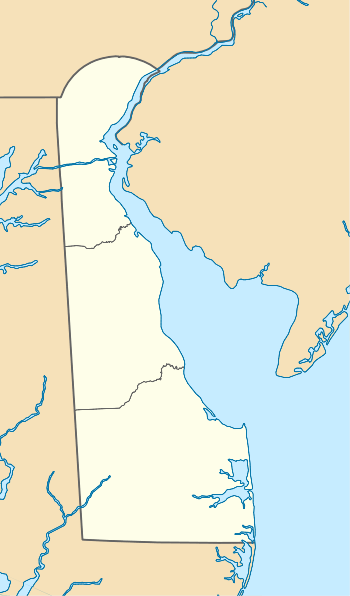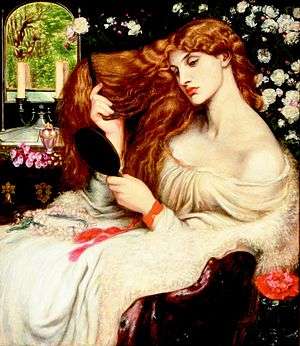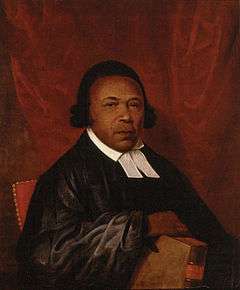Delaware Art Museum
 Exterior view | |
 Location in Delaware | |
| Established | 1912 |
|---|---|
| Location | 2301 Kentmere Parkway, Wilmington, Delaware 19806, USA 302.571.9590 |
| Coordinates | 39°45′54″N 75°33′54″W / 39.765°N 75.565°W |
| Type | Art museum |
| Director | Danielle Rice |
| Curator | Mary F. Holahan |
| Public transit access | Wilmington Amtrak Station |
| Website | DelArt.org |
The Delaware Art Museum is an art museum located on the Kentmere Parkway in Wilmington, Delaware, which holds a collection of more than 12,000 objects. The museum was founded in 1912 as the Wilmington Society of the Fine Arts in honor of the artist Howard Pyle, and is now celebrating its centennial.[1][2] The collection focuses on American art and illustration from the 19th to the 21st century, and on the English Pre-Raphaelite movement of the mid-19th century.
The museum building was expanded and renovated in 2005 and includes a 9-acre (36,000 m2) Sculpture Park, the Helen Farr Sloan Library & Archives, studio art classes, a children's learning area, as well as a cafe and museum store.
History
The museum was founded in 1912 after Howard Pyle's death as the Wilmington Society of the Fine Arts, with over 100 paintings, drawings, and prints purchased from Pyle's widow, Anne. Pyle, the best-known American illustrator of his day, died unexpectedly in 1911 while on a trip to Italy.

Pyle left behind many students and patrons in his home town of Wilmington, including Frank Schoonover, Stanley Arthurs, and Louisa du Pont Copeland, who wished to honor Pyle's memory through the museum. The museum's charter stated its purpose as "to promote the knowledge and enjoyment of and cultivation in the fine arts in the State of Delaware."[3]
From 1912 to 1922 the Wilmington Society of the Fine Arts did not have a permanent home. It held annual exhibitions of work by Pyle, as well as a juried exhibitions of his pupils and other Delaware Artists, at the Hotel duPont. The Pyle Collection continued to grow due to the largess of Willard S. Morse who gave over 100 Pyle pen and ink drawing to the WSFA between 1915 and 1919. In 1922 the Wilmington Society of the Fine Arts rented three rooms in the New Library Building on the corner of 10th and Market Streets in downtown Wilmington.[4]

In 1931 the estate of Samuel Bancroft contacted the Wilmington Society for the Fine Arts with an offer to donate a collection of Pre-Raphaelite works along with 11 acres of land to house a museum for the collection. Bancroft acquired the collection beginning in the 1890s and his collection is the "largest and most important collection of British Pre-Raphaelite art and manuscript materials in the United States."[3] Despite the harships of the Great Depression, the WSFA raised $350,000 for the new building, which opened in 1938.[5] At the same time the name was changed to Delaware Art Center.
The WSFA moved into the Delaware Art Center in June 1938, with the Wilmington Academy of Fine Arts running educational programs on the ground floor. The onset of World War II resulted in strict gas rationing, which drastically reduced the attendance to the museum. The Wilmington Academy of Fine Arts disbanded in 1943 and turned its assets over to the Delaware Art Center, forming the basis of its education department, which grew to over 500 students by 1954.
The rapid expansion of educational programs after World War II required the Delaware Art Center to expand by 1956. Thanks to a $300,000 donation by H. Fletcher Brown, studios and training facilities were included in the expansion.[3] A further renovation was completed in 1970, adding air conditioning and humidity control to the building. In 1972, the Delaware Art Center was awarded accreditation by the American Alliance of Museums. Shortly thereafter, the Delaware Art Center was renamed the Delaware Art Museum to "reflect the growing strength of its collections, programs, and constituency." [6]
A further expansion was completed in 1987, which effectively doubled the size of the museum.[7] However, the rapid growth of attendance, programming and outreach required a further expansion in 2005.
Collections
The Delaware Art Museum's collections are predominantly drawn from late 19th- and early 20th-century American illustration, as well as works from the Pre-Raphaelite Brotherhood. The basis of the museum's collections are the works of Howard Pyle and his pupils, N.C. Wyeth, Frank Schoonover, and Stanley Arthurs. Starting in 1961 Helen Farr Sloan, the wife of artist John French Sloan, began donations that eventually totalled 5,000 objects.[3][8]
Since the 1970s the museum has added works by modern artists, such as Jacob Lawrence, Louise Nevelson, Robert Motherwell, George Segal and Jim Dine.[3]
The permanent collections at the museum include the following:[9]
Pre-Raphaelite Collection

- The Samuel & Mary R. Bancroft Pre-Raphaelite Collection, including works by:

19th Century American art
- American Art of the 19th Century, including works by:
.jpg)
American illustration
Howard Pyle and his students
- From the "Golden Age of Illustration":
Other American illustration
- Including works by:
American art of the early 20th Century

- Ashcan School (The Eight), including works by:
- Other artists, including works by:
Post-World War II American art
- Including works by:
Helen Farr Sloan Library

Two separate libraries opened in the new Delaware Art Center building in 1938: one centered on the collection of Howard Pyle, and the other centering on Samuel Bancroft, Jr. and his collections of Victorian books and books on Pre-Raphaelite painting. In 1978 Helen Farr Sloan donated the collections of her husband, the John Sloan Manuscript and Library Collection. A consolidated library opened in 1985 in the new Pamela and Lammot du Pont Copeland wing and was named in honor of Mrs. Sloan. It contains over 30,000 volumes and 1,000 boxes of personal papers, photographs and other material related to John Sloan, Samuel Bancroft, Jr. and Howard Pyle and his students.[3] It recently acquired a copy of The Flower Book by Edward Burne-Jones.[10] In 2009, the museum received the M.G. Sawyer Collection of Decorative Bindings, which contains over 2,000 volumes.[11]
Copeland Sculpture Garden
| Three Rectangles Horizontal Jointed Gyratory III | |
|
|
The nine acre sculpture garden behind the museum includes nine large sculptures and an old reservoir converted into a labyrinth.
Highlights include the 13-foot-tall bronze Crying Giant by Tom Otterness and Three Rectangles Horizontal Jointed Gyratory III by George Rickey, which moves in the wind. Joe Moss is represented by a sound sculpture which modifies and distorts nearby sounds.
Exhibitions
The museum presents about ten special exhibitions each year with topics ranging from nationally known modern artists to historical Delaware folk art. Since 2009 the exhibitions have included the works of Leonard Baskin, Delaware photographer Fred Comegys, Harold Eugene Edgerton, James Gurney, May Morris, Maxfield Parrish, Ellen Bernard Thompson Pyle, Frank Schoonover, ultra-realist sculptor Marc Sijan, and John Sloan, as well as works from the collection of the Royal Holloway, University of London, and African American Art from the American Folk Art Museum.[13]
Exhibitions scheduled for 2012 include the works of Mary Page Evans, Howard Pyle, Katharine Pyle, and Katharine Richardson Wireman, as well as The Flower Book by Edward Burne-Jones.[14]
Studio art education
The museum offers about 100 programs each year, ranging from 8-week classes to 1-day workshops, as well as open studios. Special classes are offered to adults, teenagers, and children in areas including drawing, painting, photography, jewelry making, and ceramics.[15]
See also
- List of museums in Delaware
- Delaware Center for the Contemporary Arts
- Paul R. Jones Collection of African American Art
Art works
- Found (Rossetti)
- Lady Lilith
- Love's Messenger
- Mary Magdalene (Sandys)
- Mnemosyne (Rossetti)
- Veronica Veronese
References

- ↑ Soulsman; Betsy Rice (November 13, 2011). "Art museum marks a century of culture". The News Journal (Wilmington).
- ↑ Holme, Charles; Eglinton; Boswell, Peyton; McCormick,William Bernard; Whigham, Henry James, Guy (July 1916), The International Studio, 59 (233 ed.), New York: John Lane Company, p. LXXX
- 1 2 3 4 5 6 Binkowski, Kraig; Delaware Art Museum (2004). Delaware Art Museum: Selected Treasures. London: Scala. p. 136.
- ↑ Moore, Constance. History of the Delaware Art Museum written in 1962.
- ↑ Cary, Elizabeth Luther (1933-03-26). "Pre-Raphaelite Art for a Museum". New York Times. The New York Times Company. pp. IX 10:6.
The Bancroft estate has now made the Wilmington Society of the Fine Arts an offer of ground for a museum, almost three acres on a charming site, with the Brandywine Creek a for a rear boundary, the offer conditional on the erection of the museum in five years time. … if the museum is built, the Bancroft collection, consisting of many interesting items in addition to the pre Raphaelite material, will be housed within it…
- ↑ "Centennial History" (PDF). Delaware Art Museum.
- ↑ "Delaware Art Museum Quarterly 1.3".
- ↑ Sozansk, Edward J. (November 20, 2011). "Art: Delaware Art Museum show explores the versatility of Howard Pyle". Philadelphia Inquirer. Retrieved November 22, 2011.
- ↑ Binkowski, Kraig; Delaware Art Museum (2004). Delaware Art Museum: selected treasures. Scala. p. 136.
- ↑ Delaware Art Museum A SECRET BOOK OF DESIGNS: THE BURNE-JONES FLOWER BOOK. Retrieved 1 February 2012.
- ↑ Delaware Art Museum Press Release. Retrieved 21 July 2012.
- ↑ "Kinetic sculpture at the Delaware Art Museum". Delaware Art Museum. October 20, 2011. Retrieved March 19, 2013.
- ↑ Delaware Art Museum: Past Exhibitions. Retrieved February 9, 2012
- ↑ Delaware Art Museum: Upcoming Exhibitions. Retrieved February 9, 2012.
- ↑ STUDIO ART CLASSES, Delaware Art Museum. Retrieved February 6, 2012.
External links
| Wikimedia Commons has media related to Delaware Art Museum. |
- Official website
- The Samuel and Mary R. Bancroft Collection of Pre-Raphaelite Art
- Brandywine 10
- First for Friday, Howard Pyle and the Delaware Art Museum, WHYY-TV, November 4, 2011, video 28:50 minutes.
- Where In Wilmington – Delaware Art Museum – March 2008, a joint production of the City Council and the Mayor's office in Wilmington, DE, video 5:23 minutes.
